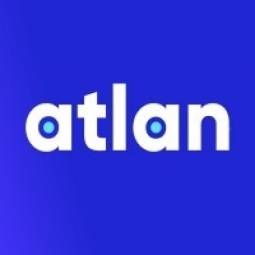Technology Category
- Analytics & Modeling - Data-as-a-Service
- Platform as a Service (PaaS) - Application Development Platforms
Applicable Industries
- Education
- Equipment & Machinery
Applicable Functions
- Product Research & Development
Use Cases
- Inventory Management
- Time Sensitive Networking
Services
- Cloud Planning, Design & Implementation Services
- System Integration
About The Customer
Nasdaq is a global technology company serving the capital markets and other industries with diverse offerings that include trading, clearing, exchange technology, regulatory, securities listing, information, and public and private company services. It is the world's second-largest exchange, with $18 trillion in market capitalization. Nasdaq has been a data-driven company for over five decades and is becoming a leader in data technology. Despite being in the cautious and often slow-moving financial sector, Nasdaq began their cloud journey with AWS as far back as 2012 and has been systematically moving towards the cloud ever since.
The Challenge
Nasdaq, the world's second-largest exchange, has been a data-driven company for over five decades. Despite having a decade of experience operating in AWS and moving the bulk of its critical workloads to the cloud, Nasdaq faced significant challenges. The trading system data was complex in size and structure, with as many as 140 billion events processed per day in the U.S. alone. The data was optimized for operational performance, not for analytics, making it difficult to manage. Additionally, Nasdaq's process for preparing and presenting data was outdated, with their legacy ETL tools unable to keep up with the scaling types of data and demand. The rigidity of these tools did not align with Nasdaq's ambitions. The data team was overwhelmed with maintaining the technical landscape and struggled to support their business partners effectively. This led to the emergence of parallel teams, each with a unique approach to creating data solutions, causing inefficiencies and confusion.
The Solution
To address these challenges, Nasdaq implemented a modern data stack and restructured their team. They adopted dbt to accelerate their team's ability to build data models and continued to operate on AWS, using Redshift as their primary data store. They also used a variety of AWS services such as S3 for their data lake, Glue for data integration, and QuickSight for business intelligence. To improve data observability, they adopted Monte Carlo. The final piece of the puzzle was Atlan, which was adopted as Nasdaq's window to their modernizing data stack and as a vessel for a maturing data governance practice. Nasdaq's data team was restructured into more specific roles, including the Platform Team and the Economic Research team. They also developed a more mature engagement and onboarding model as users began to exploit new capabilities and data. Finally, they turned to active metadata management as a path for education, collaboration, and discovery, choosing Atlan for this purpose.
Operational Impact
Quantitative Benefit

Case Study missing?
Start adding your own!
Register with your work email and create a new case study profile for your business.
Related Case Studies.

Case Study
Smart Water Filtration Systems
Before working with Ayla Networks, Ozner was already using cloud connectivity to identify and solve water-filtration system malfunctions as well as to monitor filter cartridges for replacements.But, in June 2015, Ozner executives talked with Ayla about how the company might further improve its water systems with IoT technology. They liked what they heard from Ayla, but the executives needed to be sure that Ayla’s Agile IoT Platform provided the security and reliability Ozner required.

Case Study
IoT enabled Fleet Management with MindSphere
In view of growing competition, Gämmerler had a strong need to remain competitive via process optimization, reliability and gentle handling of printed products, even at highest press speeds. In addition, a digitalization initiative also included developing a key differentiation via data-driven services offers.

Case Study
Predictive Maintenance for Industrial Chillers
For global leaders in the industrial chiller manufacturing, reliability of the entire production process is of the utmost importance. Chillers are refrigeration systems that produce ice water to provide cooling for a process or industrial application. One of those leaders sought a way to respond to asset performance issues, even before they occur. The intelligence to guarantee maximum reliability of cooling devices is embedded (pre-alarming). A pre-alarming phase means that the cooling device still works, but symptoms may appear, telling manufacturers that a failure is likely to occur in the near future. Chillers who are not internet connected at that moment, provide little insight in this pre-alarming phase.

Case Study
Premium Appliance Producer Innovates with Internet of Everything
Sub-Zero faced the largest product launch in the company’s history:It wanted to launch 60 new products as scheduled while simultaneously opening a new “greenfield” production facility, yet still adhering to stringent quality requirements and manage issues from new supply-chain partners. A the same time, it wanted to increase staff productivity time and collaboration while reducing travel and costs.

Case Study
Integration of PLC with IoT for Bosch Rexroth
The application arises from the need to monitor and anticipate the problems of one or more machines managed by a PLC. These problems, often resulting from the accumulation over time of small discrepancies, require, when they occur, ex post technical operations maintenance.

Case Study
Data Gathering Solution for Joy Global
Joy Global's existing business processes required customers to work through an unstable legacy system to collect mass volumes of data. With inadequate processes and tools, field level analytics were not sufficient to properly inform business decisions.







